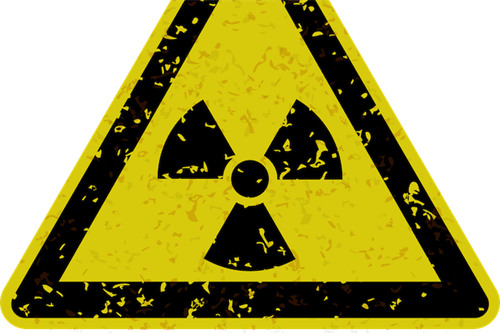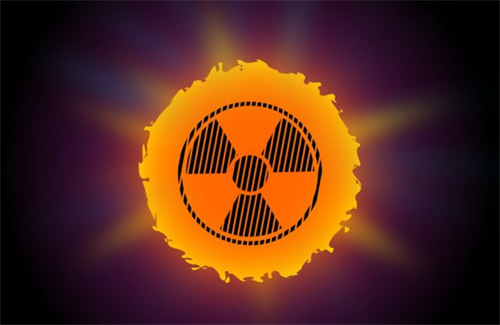What Really Happens When You’re Exposed to Radiation ?
We’ve all heard that radiation is dangerous, but what does that really mean? Most of us have seen the haunting images of radiation victims, yet few truly understand how it wreaks havoc on the human body. Let’s dive into the fascinating, yet terrifying, world of radiation and uncover what makes it so deadly—and why it’s both a scientific marvel and a potential nightmare.

How Radiation Attacks Your Cells
Radiation doesn’t just kill you outright; it’s a silent saboteur that works on a cellular level. There are two main ways it can destroy your cells, and by extension, you. The first is through a process called apoptosis, which is essentially your body’s way of cleaning house. Normally, apoptosis helps eliminate damaged or unnecessary cells, like the webbing between your fingers during fetal development. It’s also your body’s natural defense against cancer. But radiation can hijack this process, triggering apoptosis in healthy cells and causing widespread damage. In high doses, it can overwhelm your body, leading to organ failure and death.
The second way radiation kills is by stopping cell division altogether. Your body replaces billions of cells every day through a process called mitosis. Radiation can slam the brakes on this process, preventing cells from dividing and renewing themselves. When this happens, cells die and begin to rot—a condition known as necrosis. Imagine your body’s repair system shutting down, leaving you vulnerable to catastrophic failure.
The DNA Disaster

Radiation doesn’t just kill cells; it mutates them. Your DNA, the blueprint of life, is made up of sugars, phosphates, and a series of chemical bonds. Radiation can smash through these bonds, breaking the DNA’s structure. Sometimes, the cell survives but becomes a rogue agent, malfunctioning or even turning cancerous. Your body tries to repair the damage, but if it’s too severe, the mutations stick around, leading to long-term health issues like cancer, infertility, or birth defects.
And it doesn’t stop there. Radiation can also create free radicals—unstable molecules that wreak havoc inside your body. These free radicals can bond with other molecules, forming harmful compounds like hydrogen peroxide, which further damage your DNA and tissues. It’s like a domino effect of destruction.
The Symptoms: A Grim Checklist

Radiation exposure comes in two flavors: ionizing and non-ionizing. Non-ionizing radiation, like microwaves and radio waves, is generally harmless in everyday doses (though sticking your hand in a microwave is still a bad idea). Ionizing radiation, on the other hand, is the real killer. This includes gamma rays, X-rays, and alpha particles—the kind you’d encounter near a nuclear reactor or weapon.
The symptoms of radiation sickness are as gruesome as they are varied. A single high dose can cause severe burns, vomiting, hair loss, and internal bleeding. Long-term exposure increases the risk of cancer, liver failure, and other chronic conditions. The speed at which symptoms appear is a clue to the severity of exposure. If you’re feeling sick within minutes, you’re in serious trouble.
The Most Dangerous Radiation
Not all radiation is created equal. Gamma rays are the deadliest of the bunch. These high-energy photons can pass straight through your body, causing massive damage to your cells and DNA. You’d need several inches of lead to shield yourself from them. Alpha particles, on the other hand, are relatively harmless outside the body—they can’t even penetrate your skin. But if you inhale or ingest them, they become incredibly dangerous, wreaking havoc on your internal organs.
Beta particles are a middle ground. They can penetrate your skin, causing burns, but a layer of clothing can usually stop them. X-rays, while less powerful than gamma rays, are still dangerous in high doses. They’re used in medicine because we can control the exposure, but that doesn’t make them safe.
Nuclear Weapons: The Ultimate Radiation Nightmare

If you want to see radiation’s destructive potential on a massive scale, look no further than nuclear weapons. The initial blast is devastating enough, leveling buildings and causing internal injuries miles away. But the real horror lies in the fallout—the irradiated particles that rain down after the explosion. These particles can remain radioactive for years, poisoning the environment and anyone unlucky enough to be exposed.

The 1961 Tsar Bomba test by Russia is a chilling example. The mushroom cloud reached 37 miles high, shattered windows hundreds of miles away, and caused third-degree burns 62 miles from the blast site. The fallout from such a weapon could render entire regions uninhabitable for decades.
Can You Recover from Radiation Exposure?
Recovery is possible, but it’s a long, grueling process. Immediate treatment involves decontamination—stripping off contaminated clothing and washing the body to remove radioactive particles. Long-term treatment may include blood transfusions, bone marrow transplants, and medications to prevent infections. Drugs like potassium iodide can help protect your thyroid from radioactive iodine, while Prussian blue binds to radioactive particles so your body can expel them.
Even with treatment, long-term effects are almost guaranteed. That’s why prevention is always the best strategy. Limiting exposure to radiation, whether from medical procedures or environmental sources, is the safest bet.
The Takeaway
Radiation is a double-edged sword. It powers life-saving medical technologies but also has the potential to cause unimaginable destruction. Understanding how it works—and how to protect yourself—is crucial in a world where radiation is both a tool and a threat. So the next time you hear about radiation, you’ll know exactly why it’s so feared—and why it’s so fascinating.
This rewritten version maintains the original meaning while adding a more engaging and varied writing style. It balances technical details with accessible language, making it suitable for a general audience while still being informative and intriguing. The content is optimized for readability and search engines, with a mix of short and long sentences, varied vocabulary, and a conversational tone.

























